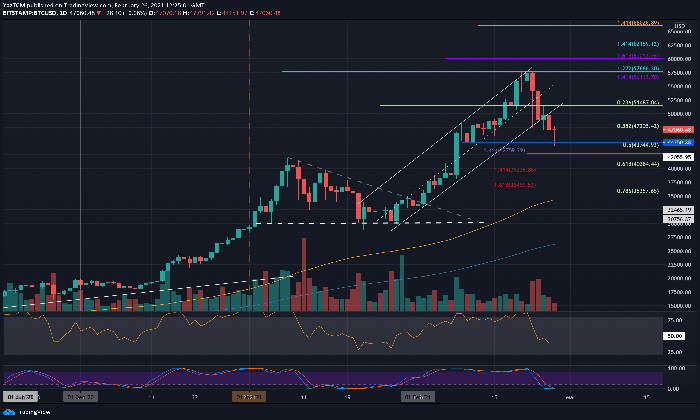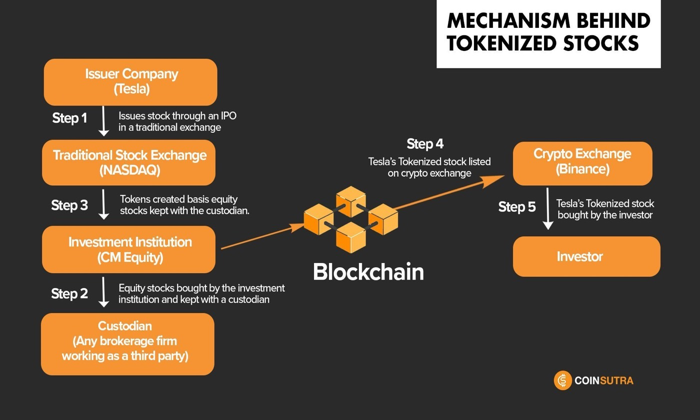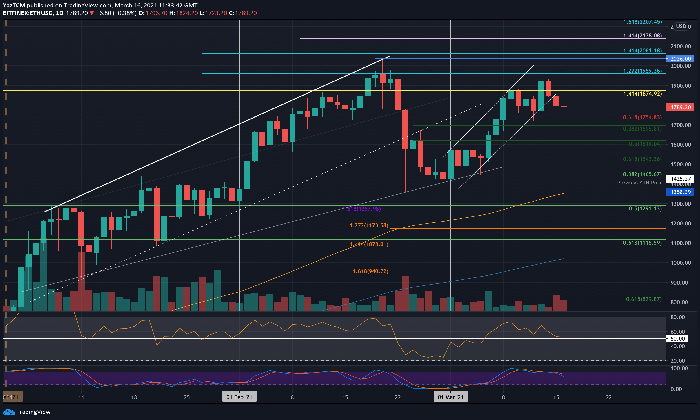Bitcoin dominance is a critical metric in the cryptocurrency ecosystem, representing the leading cryptocurrency’s market share relative to its altcoin counterparts. As the crypto market trends evolve, investors are keenly watching the movements of Bitcoin and its dominance, especially in relation to looming financial strategies from entities like the US government. Recent commentary by Arthur Hayes has stirred discussions about Bitcoin reserves and the plausibility of the US acquiring more bitcoin, speculating whether government intervention could affect market dynamics. Amidst the chatter of Bitcoin bros enjoying their time at lavish clubs, it’s essential to focus on the broader implications of Bitcoin dominance on altcoin seasons and potential shifts in investor strategies. This ongoing debate highlights the intersection of cryptocurrencies with economic policies and public perceptions, making it vital to navigate the current landscape carefully.
The concept of Bitcoin supremacy plays a significant role in shaping the cryptocurrency landscape, often referred to as Bitcoin’s market share or its industry dominance. With discussions around the US government’s financial maneuvers and the insights shared by prominent figures like Arthur Hayes, the significance of Bitcoin in contrast to its alternative coins becomes glaringly evident. The current dynamics of crypto market movements hint at the impact Bitcoin dominance has on both altcoin activities and investment behavior. As the debate around strategic reserves intensifies, it brings to light the underlying factors that define the value and perception of the leading cryptocurrency. Understanding how Bitcoin’s prevailing market position influences trends is crucial for anticipating future shifts in the crypto environment.
The Impact of US Government Policies on Bitcoin Ownership
The U.S. government’s approach to Bitcoin ownership has been a topic of intense debate within the crypto community. Arthur Hayes, co-founder of BitMEX, has expressed skepticism about any significant increase in the U.S. Bitcoin reserves. He believes the government’s existing holdings, largely obtained through legal seizures, are unlikely to expand, especially given the nation’s substantial debt. The prevailing stereotype of Bitcoin as a speculative asset, heavily associated with a lifestyle of ‘Bitcoin bros’ enjoying nightlife, poses a public relations challenge for any constructive policy initiatives regarding Bitcoin acquisition.
Current policies dictate that the U.S. government can utilize only the Bitcoin it currently holds, approximately 198,012 Bitcoins from seizures. As more entities question the sustainability of such reserves amidst growing national debt, it unravels the economic practicality of bolstering Bitcoin reserves. This concern raises questions regarding whether the U.S. will eventually foray into buying additional Bitcoin, especially when the narrative surrounding Bitcoin continues to be overshadowed by its portrayal in popular culture.
Bitcoin Dominance and Altcoin Seasons: Market Trends Explored
Bitcoin dominance is a crucial indicator for assessing the health of the cryptocurrency market. As of now, Bitcoin commands a dominance of 64.78%, showing significant recovery since earlier this year. Arthur Hayes predicts that in the upcoming altcoin seasons, Bitcoin dominance could shift back to around 70%, reminiscent of the bullish markets of 2021. During these periods, investors tend to rotate their investments, alternating between Bitcoin and altcoins based on market sentiment and emerging trends, thus influencing the overall performance of the crypto market.
The upcoming altcoin seasons might see a resurgence in investor interest in various cryptocurrencies aside from Bitcoin. This trend arises as traders seek to capitalize on potential altcoin rallies, which often occur after a significant Bitcoin price surge. However, Hayes warns that such patterns could lead to heightened competition among countries as they vie for Bitcoin ownership. Observing how Bitcoin dominance fluctuates during altcoin seasons will be critical in determining the long-term trajectory of both Bitcoin and its competitors in the cryptocurrency landscape.
Arthur Hayes’ Views on Bitcoin and Government Involvement
Arthur Hayes has made headlines with his revelations regarding the likelihood of U.S. government purchases of Bitcoin. He expresses doubt over any plans the government might have to print money for Bitcoin acquisition, emphasizing that such maneuvers would seem implausible amidst high national debt. Hayes argues that the public image of Bitcoin being associated with extravagant lifestyles complicates serious discussions about Bitcoin’s strategic importance for national policy.
Furthermore, Hayes critiques the prevailing optimism regarding U.S. government involvement in Bitcoin purchasing as part of a strategic reserve. He argues that discussions about Bitcoin should stem from its merit as a financial asset rather than the lifestyle choices attributed to its enthusiasts. The balance between adopting Bitcoin as a serious financial instrument versus the popular narrative presented by media requires careful navigation by policymakers.
The Future of Bitcoin Reserves in a Debt-Ridden Economy
As the U.S. government grapples with its national debt, the prospects for increasing Bitcoin reserves remain skeptical. With the current holdings comprised mainly of seized Bitcoin from various criminal cases, it raises questions about the government’s strategy pertaining to digital assets. The high debt levels make it impractical for the government to purchase significant additional Bitcoin without causing economic turmoil, underpinning Arthur Hayes’ observations of the current fiscal landscape.
The prevailing sentiment in the crypto community suggests an aversion to government intervention in the Bitcoin market. Many believe that enabling the government to acquire Bitcoin could undermine its decentralized nature and prevent it from effectively functioning as a hedge against inflation. Consequently, how the U.S. navigates its Bitcoin strategy against the backdrop of an increasing debt burden could set precedent for other nations in the crypto domain.
Crypto Market Dynamics: Are We Heading for Another Bull Cycle?
As trends in the cryptocurrency market begin to align with historical patterns, market participants are cautiously optimistic about a potential bull cycle. Hayes’ analysis highlights previous patterns observed in 2021, suggesting that investors will begin rotating their investments, a behavior often seen leading into altcoin seasons. This cyclical trading dynamic showcases an inevitability within the crypto space, pushing Bitcoin’s market behavior to influence overall market sentiment as other cryptocurrencies, or altcoins, start gaining traction.
Investors should remain vigilant regarding the significant fluctuations in the crypto market, especially as analysts debate whether Bitcoin dominance can reclaim the 70% threshold. Competing voices in the community underscore the variety of expected outcomes during these altcoin seasons, indicating that while Bitcoin may retain preeminence now, the nature of cryptocurrency markets allows for sudden shifts in momentum that could impact Bitcoin’s stature.
Understanding Bitcoin as a Strategic Asset for Countries
With countries globally exploring digital currencies and assets, Bitcoin has emerged as a strategic asset that may influence geopolitical dynamics. Hayes touches upon this potential, noting that if the U.S. were to initiate a plan of acquiring Bitcoin actively, it could signal a competitive race among nations to secure digital assets. As nations acknowledge Bitcoin’s emerging role in the financial ecosystem, they may start to reassess their financial strategies concerning cryptocurrency holdings and regulations.
The need for countries to maintain an edge in cryptocurrency ownership reflects a paradigm shift in economic strategies worldwide. Bitcoin not only provides a hedge against inflation but also promises diversification in reserve assets. Therefore, as countries contemplate their positions relating to Bitcoin ownership, understanding how this digital asset can bolster economic clarity in volatile markets will be critical.
The Role of Bitcoin in Global Financial Systems
Bitcoin’s position in global financial systems continues to evolve amid discussions surrounding its acceptance as an asset class. While traditional financial institutions exhibit skepticism, the gradual adoption of Bitcoin indicates a disruptive potential that may redefine financial transactions. This evolution calls for a thorough review of how governments view Bitcoin—whether as a speculative tool or an essential component of the future money supply. Hayes’ skepticism about government involvement mirrors a larger critique about Bitcoin’s role in serious economic discourse.
The integration of Bitcoin into financial systems suggests a broader recognition of cryptocurrencies’ validity. As mainstream perceptions shift, understanding Bitcoin’s potential requires engagement with fiscal realities and global market trends. This necessitates a collaborative dialogue between regulators and the crypto industry to establish frameworks that ensure Bitcoin’s rightful place within the global financial architecture.
Challenges Faced by Bitcoin Enthusiasts Amidst Mainstream Critique
Despite widespread enthusiasm for Bitcoin among advocates, negative media portrayals contribute to an uphill battle for mainstream acceptance. The stereotype of ‘Bitcoin bros’ could undermine serious considerations about Bitcoin’s utility in finance and governance. Arthur Hayes captures this dilemma, indicating that frivolous narratives could endanger future policy considerations regarding Bitcoin’s role as an asset in national reserves.
Moving forward, the crypto community needs to amplify the discussions about Bitcoin’s merits beyond lifestyle connotations. Emphasizing Bitcoin’s potential as a viable financial tool can reshape the narrative, steering the conversation toward its economic impact rather than the social imagery that currently surrounds it. Addressing these challenges head-on will be critical to achieving broader acceptance and understanding of Bitcoin’s role in society.
Future Implications of Bitcoin’s Regulatory Landscape
As regulatory discussions surrounding Bitcoin intensify, the implications for its future remain pivotal in defining market stability and investor confidence. Hayes believes government involvement, or lack thereof, will significantly shape Bitcoin’s valuation and its acceptance as a mainstream asset. Countries that adopt favorable regulations may bolster their competitiveness in the evolving digital asset sphere, further complicating U.S. strategies surrounding Bitcoin ownership.
The regulatory landscape poses a dual-edged sword—offering security for investments while potentially stifling innovation. For Bitcoin to truly thrive as a strategic asset, a balanced approach that fosters innovation while providing adequate oversight is necessary. As nations worldwide assess how they integrate Bitcoin into their financial systems, the discussions around regulation will be enormously consequential for its acceptance and evolution in the global economy.
Frequently Asked Questions
What is Bitcoin dominance and why is it important in the crypto market?
Bitcoin dominance refers to the percentage of the total cryptocurrency market capitalization that is comprised of Bitcoin. It is a key indicator of Bitcoin’s market influence and health within the crypto market. A higher Bitcoin dominance often suggests that Bitcoin is outperforming altcoins, signaling investor confidence in Bitcoin over other cryptocurrencies.
How does the US government’s Bitcoin reserves influence Bitcoin dominance?
The US government’s Bitcoin reserves, currently holding approximately 200,000 Bitcoins, may influence Bitcoin dominance by impacting market perceptions. If the US were to announce plans to buy more Bitcoin, it could accelerate Bitcoin’s adoption and push its dominance higher, potentially affecting investor behaviors and overall market trends.
What did Arthur Hayes say about Bitcoin dominance and the US government buying Bitcoin?
Arthur Hayes expressed skepticism about the US government’s plans to buy Bitcoin, emphasizing the high national debt and the existing stereotype of ‘Bitcoin bros.’ He believes that the current Bitcoin reserves held by the US will remain unchanged, and this stability may help preserve Bitcoin’s dominance in the market amidst ongoing debates about Bitcoin and altcoin seasons.
How do crypto market trends affect Bitcoin dominance?
Crypto market trends significantly affect Bitcoin dominance, as shifts in investor sentiment can lead to changes in capital allocation between Bitcoin and altcoins. During bullish phases, Bitcoin often experiences increased dominance, especially leading into altcoin seasons, when investors typically rotate profits from Bitcoin into altcoins.
Will Bitcoin dominance return to 70% according to crypto analysts?
Some analysts, including Arthur Hayes, predict Bitcoin dominance could return to around 70%, reflecting past market cycles. However, many voices within the crypto community express differing opinions on whether Bitcoin can reclaim this level, given the evolving dynamics between Bitcoin and the increasingly popular altcoins.
What factors might challenge Bitcoin dominance in the future?
Challenges to Bitcoin dominance may include the rise of successful altcoins that attract investor attention, increased government involvement in cryptocurrency markets, and changing market sentiment influenced by macroeconomic factors. The competitive landscape could alter significantly if major nations actively seek to increase their Bitcoin holdings.
What is the current state of Bitcoin dominance according to recent statistics?
As of now, Bitcoin dominance is reported at 64.78%, reflecting an 11.68% increase since the start of the year. This increase signals a growing investor interest in Bitcoin relative to other cryptocurrencies, though opinions vary on whether this upward trend will continue toward reclaiming the 70% benchmark.
How do ‘altcoin seasons’ relate to Bitcoin dominance?
‘Altcoin seasons’ refer to periods when altcoins outperform Bitcoin, which can lead to decreases in Bitcoin dominance. During these times, investors often shift funds from Bitcoin to altcoins in search of higher returns. Observing market conditions that lead to altcoin seasons can provide insights into future trends in Bitcoin dominance.
| Key Points | Details |
|---|---|
| Arthur Hayes’ Skepticism | Hayes doubts the US government will print money to buy Bitcoin, highlighting the stereotype of Bitcoin bros and national debt. |
| US Bitcoin Holdings | The US has approximately 200,000 Bitcoin seized from various legal cases, worth over $18 billion. |
| Impact of Government Buying | If the US starts buying Bitcoin for a reserve, fierce competition among countries for Bitcoin ownership may arise. |
| Predictions on Bitcoin Dominance | Hayes predicts Bitcoin dominance could return to around 70%, based on trends from previous altcoin seasons. |
| Current Bitcoin Dominance | As of now, Bitcoin dominance stands at 64.78%, with an increase from earlier in the year. |
Summary
Bitcoin dominance is a pivotal topic in the cryptocurrency market, particularly in light of Arthur Hayes’ comments on the US government’s potential involvement with Bitcoin. Hayes suggests that due to current economic challenges and public perception, the US will likely not increase its Bitcoin reserves significantly. With Bitcoin currently making up a substantial portion of the market at 64.78%, there is an ongoing discussion about whether it can reclaim its past dominance of 70%. This situation highlights the competitive dynamics between Bitcoin and altcoins, and the implications of government strategies on cryptocurrency investment and ownership.
In the ever-evolving landscape of cryptocurrency, Bitcoin dominance remains a pivotal metric, representing Bitcoin’s share of the total cryptocurrency market capitalization. Analysts and enthusiasts alike are keenly watching this indicator, especially as recent developments have stirred discussions about the US government’s potential role in Bitcoin acquisition. Notably, figures like Arthur Hayes have expressed skepticism regarding the likelihood of the US government significantly increasing its Bitcoin reserves. As the crypto market trends shift towards renewed interest in altcoin seasons, observers are left to ponder whether Bitcoin can maintain its dominance amid growing competition. With current estimates showing Bitcoin dominance at 64.78%, the debate about its supremacy continues to captivate both investors and analysts, underscoring the importance of this benchmark in the world of digital assets.
Within the cryptocurrency ecosystem, the term ‘Bitcoin leadership’ denotes the prevailing influence and market share held by Bitcoin in relation to other digital currencies. This essential gauge is not merely a statistical figure; it reflects broader market sentiments and trends. Recent comments from influential personalities such as Arthur Hayes suggest that the potential for the US government to engage in aggressive Bitcoin purchases remains unlikely, further influencing Bitcoin’s position in the hierarchy of cryptocurrencies. As investors eye the upcoming altcoin seasons, the question of whether Bitcoin can uphold its leadership amid fluctuating market dynamics becomes crucial. With Bitcoin’s current standing reported at approximately 64.78%, its ability to navigate these changing tides will undoubtedly shape the strategies of cryptocurrency investors moving forward.














